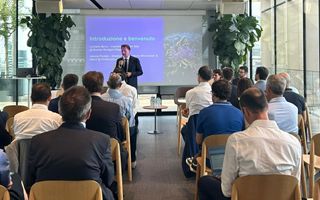(Finance) – The world of digital assets and of the cryptocurrencies is experiencing a phase of strong evolution and growth that is already having an impact on the Italian banking and financial sector. A challenge that the protagonists of this field must be able to grasp, to keep pace with a change driven primarily by consumer choices. TheEuropean Union It stood out among the major continental blocs, approving important initiatives, such as the MiCAR.
There European regulation is currently the most complete in the world, so much so that it has attracted numerous non-European players to our market, with the aim of exploiting the legislation to operate “remotely” on their territory. The scenarios that are opening up thanks to MiCAR are broad, complex and with enormous potential. Luciano GreenhouseCountry Manager Italy of Boerse Stuttgart Digital, said: “In Italy, crypto-assets have significant growth potential. MiCAR will facilitate the entry of traditional financial institutions in this sector, especially those already in line with the safety standards required by recent European regulations, giving them the opportunity to intercept latent demand, thanks to the relationships already established with their customers. We are at the beginning of a new phase that will favor the expansion of the offer of banks and the convergence of traditional and digital finance across all major crypto-asset services.”
Precisely in preparation for the full implementation of the legislation, Stuttgart Digital Exchangein collaboration with theBlockchain & Web3 Observatory of the Polytechnic University of Milanhas carried out a research entitled “The diffusion of crypto-assets and blockchain in the financial sector: analysis of consumer demand and banking supply in Italy”. This research shows a tangible interest from a considerable portion of Italians towards crypto-assets, an expression that includes both cryptocurrencies (such as Bitcoin and Ether) and tokens that represent rights, utilities or real-world assets, such as NFTs.
From theinvestigation However, it appears that the offer of cryptocurrency-related services by credit institutions is still in an early and immature phase, despite encouraging signs from some players. Banks are focusing on services for end consumers, but no institution yet provides custody services for crypto-assets, an element that suggests the possibility of a market, in our country, for custody services for traditional finance players.
Turning to the motivations that push Italian credit institutions to adopt these technologies, the interest is mainly driven by the opportunities offered by blockchain, especially in tokenization projects, which often aim to improve efficiency and increase access to liquidity in financial markets.
In this scenario it is therefore important to analyze and define the role of the industry and the operators in the sector, but also to invest in training and information. Valeria PortalDirector of the Blockchain & Web3 Observatory at the Politecnico di Milano, stated in this regard: “In Italy, the pool of potential users is vast: it is about 14 million people who own or have owned crypto-assets in the past. Among them, we find many young people attracted by these tools, but also individuals with significant capital. We must not make the mistake of considering it a niche market, since with the development of regulation, traditional finance players will also start to develop services, as we are already observing. However, it is essential to also work on educating users about these tools, which are very different from traditional financial products and potentially very risky. An effort is needed to educate consumers about the potential risks associated with them, so that they can act with awareness”.
Cryptocurrencies, unlike most traditional investment assetshave an accumulation mode similar to that of the cashand are therefore exposed to the same risks. In this sense, banks can play a fundamental role in their custody. In this sense, banks can be the ideal interlocutor for citizens, providing a service for which they have consolidated expertise, and at the same time increasing the market’s trust in these instruments.
Despite the many challenges and risks outlined, the world of crypto-assets shows clear signs of growth in Italy, driven above all by consumers. The research by Boerse Stuttgart Digital has clearly highlighted how the sector financial traditional is struggling to keep up. At the same time, several banks are showing a real interest in this market, but are adopting an extremely cautious approach that, in the long run, could prove counterproductive. Regulation MiCAR It came into force gradually starting from June 2024 and will complete its implementation process on December 30, 2024. 2025 could therefore become the turning point for the world of Crypto-Assets.
